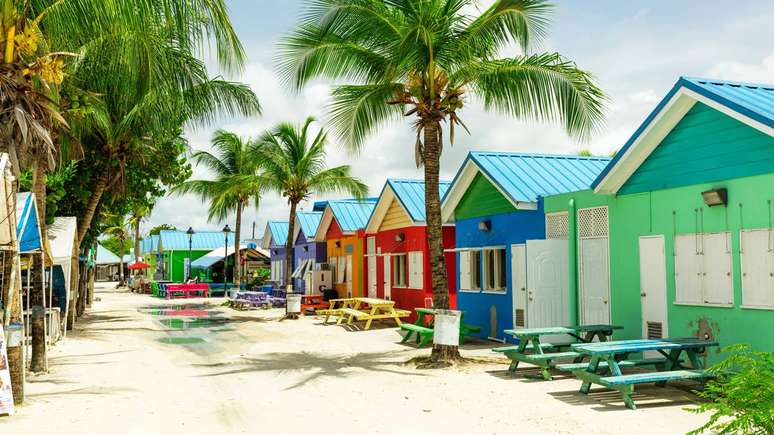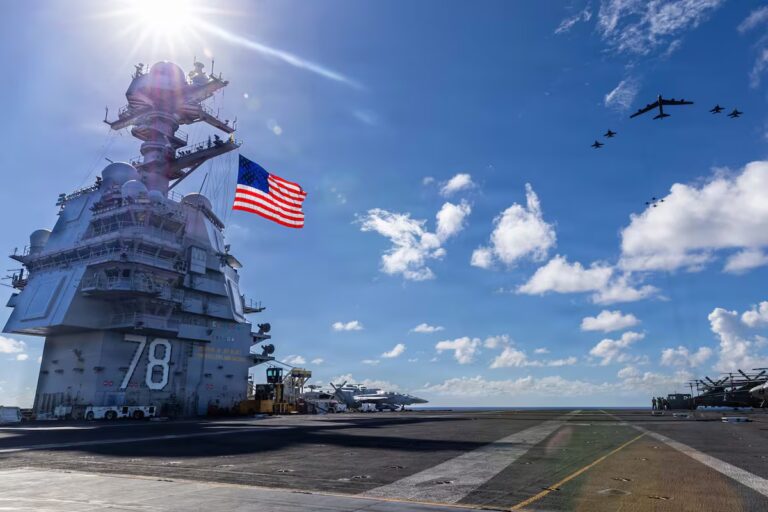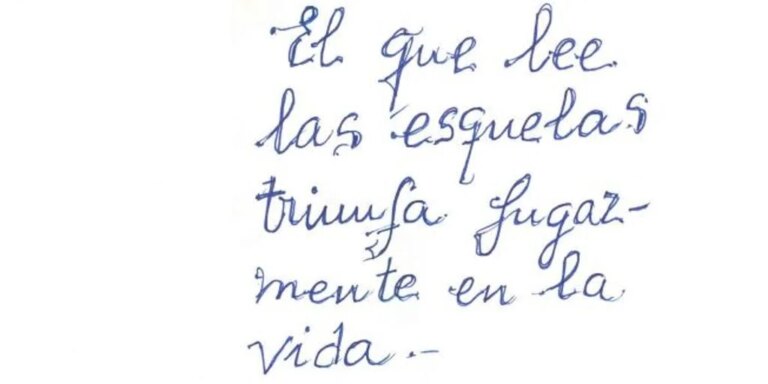
Learn the meaning of the broken trident on the Barbados flag and be amazed by its history and impressive symbolism.
When looking at the Barbados flag, one of the most attention-grabbing elements is the central figure with a broken trident. More than just an aesthetic detail, this symbol has deep meaning for this country’s national identity. The existence of this trident, especially its broken handle, is directly tied to the history and values of the Barbadian people.
The flag was officially adopted on November 30, 1966, when Barbados gained independence from Great Britain. Since then, the elements and colors of the national flag have become a visual expression of the spirit of autonomy, freedom and respect for local traditions. Although the use of blue and gold is integrated with the island’s natural landscape, it is the trident that conveys the country’s main political and historical message.
What does the trident on the Barbados flag represent?
The stylized trident located in the center of the cloth directly recalls the god Neptune, a character from classical mythology associated with the sea. This is no coincidence, as Barbados is an island surrounded by the Atlantic Ocean, and much of local life is inherently connected to the sea and sailing. Known locally as ‘Neptune’s Trident’, this symbol reminds Barbadians of their connection to the sea and projects a vision of power and autonomy.
But the surprising detail of the trident on the Barbados flag is its broken condition. Far from being a flaw or a mere artistic whim, the figure’s broken cable clearly represents the rupture of the old colonial ties that have bound Barbados and the British Empire together for centuries. The broken trident thus symbolizes the end of foreign domination and the beginning of a new era of autonomy and national sovereignty.
Why is the trident on the Barbados flag broken?
The choice of the broken trident as the centerpiece reflects the country’s recent independence in 1966. This symbol indicates distance from the British crown, emphasizing political separation and the desire to go one’s own way. By breaking the handle of the trident, the image symbolically conveys the final end of colonial subjection. This break is seen by many as a symbol of national rebirth and a reinforcement of a distinct Barbadian identity in the Caribbean.
In addition, the trident also has three points, each of which has a fundamental value. It is “a government of the people, by the people’s representatives, and for the people.” These principles reflect the country’s commitment to democracy and public participation, which are core values of the new post-independence national structure.
What other elements make up the flag of Barbados?
In addition to the trident, the Barbados flag has other notable visual features. It consists of three vertical bands of equal size. The two outer stripes are an ultramarine hue, representing the sky and sea that surround the island, while the central golden stripe symbolizes the sandy soil that characterizes the local beaches. At the center of the gold band is the iconic black trident. The lean, yet meaningful design reinforces national pride by showcasing Barbados’ natural beauty and historic past.
- Blue stripe on the left: Pointing to the sky above the island.
- Central golden band: It represents the beaches and soil of Barbados.
- Blue stripe on the right: It symbolizes the sea that surrounds the territory of Barbados.
- Broken trident: Emphasizes the process of independence and self-determination.
What impact does the Barbados flag have on national identity?
The inclusion of the broken trident on the national flag strengthens the symbol of resistance and overcoming that speaks to the country’s historical trajectory. In addition to identifying Barbadians at international events and sporting competitions, the flag has become an element of collective pride, uniting generations around the memory of the struggle for national self-determination. Flying the national flag at national festivals, public buildings and schools reinforces the message of resilience and integration of the island population.
The flag of Barbados therefore remains a synthesis of the country’s dreams, achievements and values. More than just a heraldic detail, the broken trident is a permanent reminder of our determination to walk on our own, without losing our cultural heritage and references to our ancestors’ connection to the sea.




